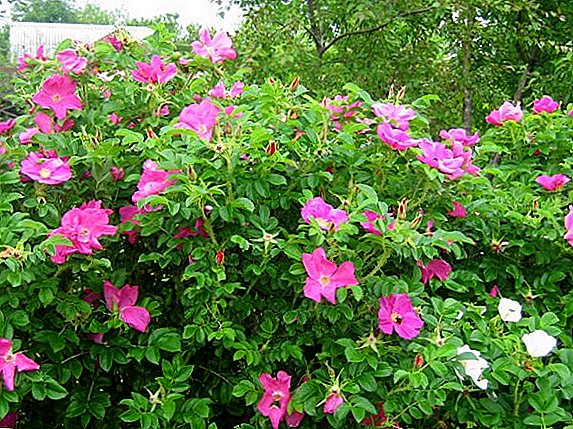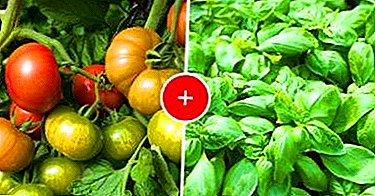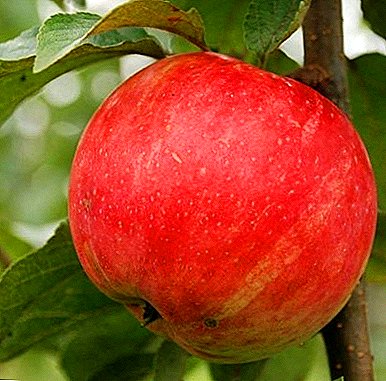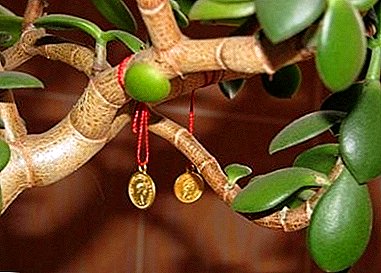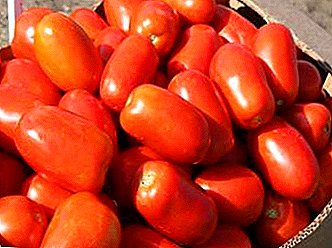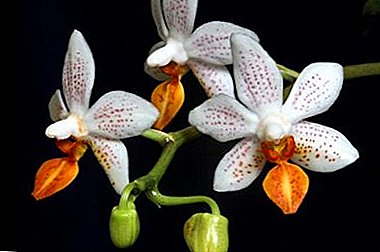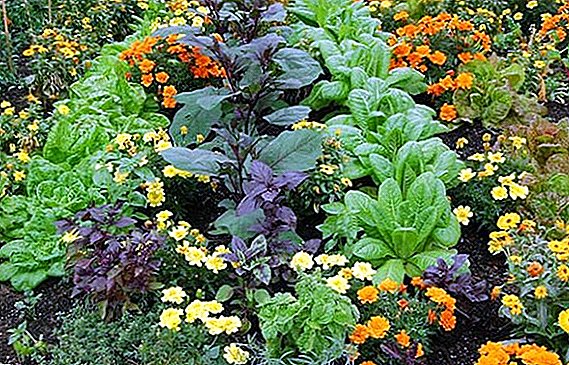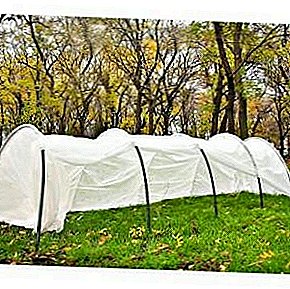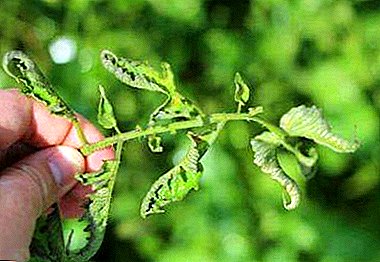
Caring gardener prepares seedlings in the fall. One of the favorite cultures is the tomato - quite unpretentious vegetable.
But even with such an undemanding and viable plant, problems occur: for some reason, the seedlings begin to languish, and it turns out that all the work is down the drain.
How to act in a situation when the leaves of seedlings of tomatoes look atypical, what to do to cure young plants - you can learn about all the intricacies in the article.
What problems often arise and what to do to solve them?
Extracting tomato sprouts
When growing tomato seedlings at home, one of the common problems can be “pulling out” tomatoes. This happens for the following reasons:
- Shortages of light plants.
- Violation of temperature.
- Excessive watering of tomatoes.
- Excess feeding seedlings.
To cope with this problem is easy:
- Care must be taken that a growing tomato does not block access of sunlight to each other. You can use artificial light.
- In bright sunny weather, the temperature in the room should not exceed 28 degrees Celsius. In cloudy weather, the temperature should be no higher than 20 degrees.
- Water the seedlings need to complete the drying of the soil.
- Make a feeding is only when absolutely necessary (when the plant is late in growth, the leaves change their color and much more).
It looks like a disease:

Leaf problems
Upper leaves curl down
Sometimes the leaves of tomatoes are bent down due to lack of substances., such as:
- Phosphorus.
- Sulfur.
- Boron.
- Zinc.
- Copper.
Attention! To help the seedlings, you need to make fertilizer containing the necessary substance.
Sheet curling can also occur for the following reasons:
- Fertilizer overdose. To feed tomatoes is when the plant begins to lag in development or the leaves lose their color.
- Root disturbance. Most often with a transplant. It is necessary to carefully examine the roots of the seedling. If the damage is severe, the plant must be removed.
- Low air humidity or soil. This can be corrected with a spray bottle. It is necessary to spray the ovary 1-2 times a day with separated water. It is also recommended to make drainage in a pot with seedlings.
- Temperature increase. The temperature in the room where the seedlings are contained should not exceed 35 degrees Celsius.
- Too abundant watering seedlings. It is advisable to water the ovary of the tomato no more than 1-2 times a week. When dry weather can be watered every 3 days.
- Viral or bacterial disease. As a rule, the seedling must be removed, and the remaining seedlings should be disinfected with special preparations.
- Tomato bacteriosis. The disease is manifested by yellowing and twisting of the leaves. In this case, the seedlings must be removed.

Dry up
Leaves dry for the following reasons:
- Deep root damage. In this case, the seedling can not be saved.
- Dry indoor air. The problem can be solved using a spray gun several times a day. Moisten the air at the seedlings. You can also install a humidifier.
- Not enough moisture in the ground. If lumps or crusts appear on the soil, seedlings should be watered more often.
- Excessive watering tomato. In this case, the process of rotting the roots begins. Such seedlings should be removed. If the roots of the seedling are quite healthy, it can be transplanted into a new container.
- Soil salinity. It is necessary to remove the top layer of soil and add fresh ground. Exclude for a few weeks the bait and water the ovary with distilled or boiled water.
- Not enough minerals. In this case it is necessary to apply certain fertilizers.
In the photo - seedlings, which leaves dry:

Wither and fall
The plant may start to wither due to various problems.:
- Bad soil. Tomatoes do not fit too heavy solid ground. Also, the land should not be too acidic or salty. It is advisable to transplant the seedling into a more suitable soil.
- Seedling thickening. When plants are cramped and lack light, they begin to lose leaves and wither. In this case, you need to increase the space between the pots of seedlings.
- Lack of light. To avoid such a problem, you can use artificial lighting.
- Wrong temperature. For seed germination, the air temperature in the room should be at least 15 degrees Celsius.
- Wrong watering mode. It is undesirable to water the tomatoes more than 2 times a week.
- Fertilizer oversupply. Most often, an overdose of nitrogen. As mentioned above, feeding is necessary only as needed.
- Various seedling diseases. In this case, treatment depends on the specifics of the disease. Sometimes it is enough to remove the affected leaves.
It looks like a disease:

Curl up
This problem occurs for reasons:
- Root damage. Water the plant with warm water. When the earth becomes softer, the seedling should be carefully removed from the container and inspect the roots. If the roots are badly damaged, the plant should be removed.
- Stalk breakage. In this case, the ovary can not be saved. They are subject to removal.
- Serious seedling disease. Sick tomato should be destroyed and disinfected the rest of the seedlings.
- Defeat of seedlings by insects. It is necessary to remove the affected areas of plants and carry out the disinfection of all seedlings.
- Lack or excess of tomato bait. For seedlings is a destructive as a lack of fertilizer, and overdose. It is desirable to lure a plant if necessary.
- Heat and lack of air. To cope with the problem, you need to air the room with seedlings. But in no case should not allow drafts.
- Overabundance or lack of moisture in the soil. The problem can be avoided by drainage in pots.
- The gardener incorrectly stepson the plant. In developing seedlings, it is undesirable to tear off the lower leaflets.
- Ammonia formation in the soil. Either a surplus of zinc or nitrogen in the ground. This problem can be overcome with the help of wood ash. You need to dissolve 200 grams of ash in 10 liters of water, then pour the soil and ovaries of tomatoes.
- Copper deficiency. It is enough to spray the plant with any copper-containing agent (for example, copper sulfate solution).

Fungal diseases
Fungal diseases most often affect the ovary of tomatoes. The reasons for their appearance can be:
- Poorly cultivated soil.
- Sick tomato seeds.
- High humidity in the room.
- Improper care of seedlings.
- Moisture on sprouts during watering.
- Poor drainage of planting pots.
- Stagnant water in the ground.
The latter seems to be the most favorable environment for the development of fungal diseases. One of these diseases is rhizoctoniosis. Otherwise referred to as "black foot" or "root rot." Symptoms include:
- Darkening of the stem of the ovary at the root.
- The stalk becomes thinner.
- Wilting sprout and its fall.
The plant itself is impossible to save. It dies during the day. Tomato ovary should be removed and the soil treated with 3% manganese solution. The remaining seedlings are desirable to spray the Bordeaux mixture.
It looks like a black leg on tomato seedlings:

Late blight
A destructive fungal disease. Infection of seedlings occurs through poorly cultivated soil.. It is rather difficult to diagnose a fungus at an early stage of development, because it is difficult to treat the plant. The disease can affect any vegetable crop at all stages of growth and flowering.
Symptoms of the disease:
- The manifestation of dark spots with bright edges on the leaves and stem of seedlings.
- Rotting stalk.
- Complete drying of tomato ovary.
To cope with the fungus is possible only with the timely removal of the affected leaves or stems of the plant. Remote parts of the ovary must be burned.. The remaining seedlings should be disinfected with a solution of Bordeaux mixture.
Important: Do not leave infected plant parts in the garden. Do not use them as a compost.
To avoid further spread of the disease, the removed grass must be burned.

Alternaria or dry rot
The disease manifests itself as:
- The appearance of brown spots on the underside of the leaves.
- Spots grow rapidly and cover all areas of the leaves.
- Fall leaves of seedlings.
- Darkening of the stem of a tomato.
Fight against the fungus should be using chemicals:
- Acrobat.
- Ditan.
- Kvadris.

White spot
The fungus enters from the soil on the lower leaves of the seedlings and spreads quickly throughout the stem.
Symptoms of the disease:
- Darkening leaves of tomato.
- The appearance of black spots on the affected foliage.
- Drying and dying of leaves.
With timely detection of the disease, the plant must be treated with a solution of copper sulphate (1 cup - 10 liters of water). In case of a protracted disease, seedlings should be destroyed, and the soil should be disinfected with potassium permanganate and sprinkled with wood ash.

Cladosporiosis
In general, the infection with olive blotch occurs after the planting of tomato ovaries in the greenhouse. The first signs of fungus are:
- The appearance of yellow spots on the lower leaves of the seedlings from the outside.
- The formation of velvety plaque from the inside of the sheet.
- Twisting and dying off the foliage.
For treatment, it is enough to remove diseased foliage from the seedlings and carry out the processing by any of the following means:
- Bordeaux acid.
- Barrier.
- Barrier.

Mealy dew
The disease is caused by a marsupial fungus.. Transmitted to the plant from contaminated soil. Externally manifested by white bloom on foliage. For the treatment and prevention of disease, seedlings are sprayed with:
- Kvadris.
- Strobe.
- Topaz.
Before planting the seeds in the tank, you can soak them in the Epin solution.

Viral pathology
These plant diseases can get through contaminated soil or insects. Detecting the disease is not easy at first. Serious manifestations of the virus become visible only with full infection. For the prevention of plants, it is necessary to treat the soil with a slightly diluted solution of manganese or boric acid. One such viral disease that occurs very often is yellow curl. Disease vector - whitefly.
Symptoms of the virus:
- Short stature ovary.
- The manifestation of light yellow spots on the leaves.
- Deformation of the plant.
- Lagging seedlings in development.
- Uneven color of the plant.
The disease is not treated. The affected seedlings subsequently do not bear fruit. To avoid the spread of the virus, it is necessary to remove the diseased sprout. The remaining seedlings need to be treated with mineral oils.
Mosaic causative agent
The disease develops when a plant is infected with a rod-shaped virus. External manifestations:
- Uneven leaf color from dark to light shade.
- The appearance on the seedlings of yellow spots.
- Darkening of the leaves.
- Drying plants.
Sick tomato seedlings need to be removed and burned. The remaining ovaries can be treated with urea solution.
It looks like a mosaic on the leaves of tomatoes:

Aspermia or seedlessness
Another one of the most common seedling diseases. Externally manifested:
- Weak and thin stem.
- General underdevelopment of seedlings.
- Deformation of the plant.
- Small undeveloped leaves of the ovary.
The disease cannot be cured. Therefore, it is necessary to remove the diseased seedlings and disinfect the remaining plants with a solution of potassium permanganate or poorly diluted urea. Also, it is necessary to thoroughly disinfect the soil before planting seeds. In addition, you need to keep the seedlings clean and monitor the humidity of the air and the ground. Possible effects of the virus:
- Infected plants do not bear fruit well.
- The fruits of tomatoes are small in size.
- Deformation of vegetables.
- The lack of seeds in the affected tomatoes (which is the main feature of the disease).

Strick
The disease is caused by a tobacco mosaic virus. External symptoms of her:
- The appearance of brown strokes on the stem and leaves.
- Ulceration in place of strokes.
- Dying off the top of the seedling.
- Loss of leaves of the ovary.
As a rule, the disease does not destroy the entire germ. For treatment, only the affected part of the plant can be removed. Then process the tomato and the ground with 5-10% solution of potassium permanganate. It is desirable to disinfect the roots of seedlings with the same solution. This will slow down the development of the seedling, but completely cure it of the virus. The disease can cause:
- Reduced yield of tomatoes.
- Impairment of fruit quality.
- Weak resilience vegetable.

Diseases caused by pathogenic microorganisms
Such diseases are the most dangerous for plants. They can be transmitted through the soil, parasites or are already present on the seeds of tomatoes. Bacteria can manifest themselves either immediately or be in "sleep" mode. To avoid plant diseases, one should not allow:
- Temperatures above 28 degrees Celsius.
- High soil moisture.
- Water stagnation in planting pots.
The most dangerous bacterial disease can be considered "bacterial cancer". The disease destroys the vessels of the plant. Externally manifested as:
- The appearance of ulcers around the stem of the stem.
- The complete loss of seedlings.
Treatment is impossible. The diseased plant must be removed and burned. The soil in which the seedlings were located is no longer used. Prevention of this disease can be seed treatment with 40 percent formalin (in the calculation of 1 part of the solution - 300 parts of water).
Spotting
Brown
The disease has the following symptoms.:
- Small yellow spots on the outside of the leaves.
- The rapid proliferation of these spots.
- White bloom on the inside of the sheet.
- Dying off the leaves of the seedling.
The disease can be cured by spraying kuprosila, copper sulfate or any other copper-containing drug.

Black bacterial
External symptoms of the disease appear quite late:
- Slight lethargy germ.
- Small black spots on the leaves and stem of a tomato.
- The rapid spread of spots throughout the plant.
- The death of the seedling.
Contaminated seedlings are best removed. The remaining shoots must be treated with a 1% Bordeaux solution every few days.

Mottling
Disease develops due to the penetration of phytopathogenic bacteria into crops. External signs of the disease:
- The appearance of transparent oil stains on the leaves of seedlings.
- Damage to the leaves starts from the edges to the middle.
- Twisting foliage of a plant.
- Total loss of leaves.
To cure seedlings it is necessary to spray with blue vitriol (1 cup - 10 liters of water) or Fitolavin-300.

Stolbur
The most common bacterial disease home seedlings. Microplasma bodies causing many types of insects cause illness. Symptoms of the disease:
- Pink or purple spots on seedlings.
- The leaves and stem of the plant are very coarse.
Treatment and prevention is made by any special preparation:
- Confidor.
- Aktara.
- Mospilan
Spraying is done twice.:
- Three weeks after planting seeds in the tank.
- Before planting seedlings in a permanent place.

Bacterial wilt
A dangerous disease when plants start to wilt suddenly. Other symptoms may be:
- Formation of aerial roots.
- Cessation of plant growth.
- Cover the leaves of seedlings with yellow spots.
- Formation of longitudinal brown stripes on the stem.
The disease is incurable. Seedlings should be burned and the soil treated. Other plants need to be disinfected Fitoflavin-300.
In the photo below - a plant affected by the disease:

To get a big crop of tomatoes in the autumn, it is necessary to properly maintain seedlings in the winter. If you take care of the seedlings with full responsibility, you can avoid many diseases.


